HRM and Entrepreneurship in Leading Change at NHS
Abstract
Managing the leadership and entrepreneurship skill in the organisational workplace is mandatory for the organisational leader to handle the diverse workface and lead the change towards achieving success. The research topic is to analyse the impacts of human resource management strategy and entrepreneurship style on leading changes in the organisation NHS. Through this study, it is possible to understand the leadership style and human resource management strategic planning to handle the workforce and lead the change. Recently, the organisations are looking for strategic change for ensuring organisational excellence and enhancing the firm’s creativity and technological innovation. The study focuses on managing the change in the NHS which is a famous health care service in the UK, also provides HRM dissertation help. The first chapter is good for describing the research aim and objectives. The second chapter of the research is literature review; here the researcher will gather secondary information from the authentic sources of books, journals articles and online published journals. The third chapter is research methodology and in this business project, he researcher will choose both the primary and secondary data collection method as well as for analysing the findings, the qualitative data analysis method will be chosen for better evaluation. The fourth chapter is data findings and analysis and the last chapter is conclusion and recommendation which are effective or providing suggestion to NHS for better leadership practice to lead the changes in the organisation.

Acknowledgement
This research has been the greatest learning opportunity for me throughout the entire course; and it would have been difficult without the patient valuable and constructive support, and guidance provided by my lecturer. His/her commitment and passion to teach further inspired me at a time when I felt totally exhausted and lack of confidence. I feel confident and to complete my course in Business Management with effective support and advise from my peers. I would like to thank various people for their contribution to this research project. I wish to thank my fellow members and colleagues for making each and every day a challenge, as well as their support and encouragement during this project are effective for me to get motivation and also I am blessed with supportive family members. I also get cooperation and support from the employees and managers at the human resource department of NHS, who are the major participants in my research. Without their cooperation and response, it would be impossible for me to gather authentic and valid information about the internal process of change management to conduct this study with appropriate analysis and evaluation.
Chapter 1: Introduction
The research is about to analysing the impacts of human resource management strategy and entrepreneurship style on leading changes in the organisation NHS. In the recent era of globalisation, change management strategy of the organisations is one of the major strategic moves of the firms to achieve future success efficiently. For maximising organisational excellence and enhancing creativity and innovation, the organisations try to develop appropriate strategy for leading the change and fulfilling the organisational aims and objectives. The chapter is good for describing the aim and objectives of the research through which the researcher will progress in the business project efficiently in a systematic way to complete the study efficiently.
1.1 Rationale of the study
In the recent era of globalisation, the organisations prefer to manage change in the organisation for better creativity and innovation. Through changing the business functions including operational activities, human resource management, technological advancement, Information Technology (IT) infrastructural development, leading to automation and robotics and marketing and finance which are major functions that have crucial impacts on the organisations (Banfield, Kay and Royles, 2018). The organisations herby try to change their operational activities through more creativity and technological innovation where change management is mandatory of the organisation to lead the employees towards the change initiatives and achieve future success (Kakucha, Simba and Ahmed, 2018). In the recent era of globalisation, the organisations face several challenges in running their organisational activities in the market which are related to lack of organisational efficiency, poor market share and lack of innovation and creativity which further raise the issue for the organisations to active future success and gain high competitive advantage. It is necessary for the organisations to achieve success and fulfil the organisational objective and for this change management principles are necessary to be managed and implemented in the organisational workplace (Kakucha, Simba and Ahmed, 2018).

On the other hand, the change management principles are also mandatory for the organisations but the firms face issues to manage change in the workplace (Banfield, Kay and Royles, 2018). The major issues related to change management are such as resistance to change, misunderstanding, and lack of cooperation and poor communication as well as internal conflicts which further leads to mismanagement and deterioration of the quality of products or services provided by the organisations. Hence, change management strategic planning is mandatory for the organisations to manage the workplace culture and lead the change by engaging all the employees in the organisation. National Health Service (NHS) is a publically funded health care system in the UK which is famous health care service provider across the UK. The quality of care that NHS provides is good and the services are also fruitful for the social communities across the UK.
The organisation is efficient to handle their operations and engage with the social communities for maximising their wellbeing in long run. In addition to this, there are 1.7 million staff members working in the organisation, where the organisation is the fifth largest employer around the globe (NHS, 2020). The staff members services to the million patients within 24 hours. The organisational capabilities and the working practice are also effective to manage the organisational operational activities and thus the organisational employees and health care managers are successful to create values for the patients and social communities as a whole. Change management is essential for the organisation to lead changes and enhance creativity to serve the patients efficiently (NHS, 2020). Enhancing creativity and innovation further provide a scope to NHS to manage their tasks and activities and create values for the patients and thus change management is mandatory for the organisation to lead the employees and manage them efficiently (NHS, 2020).
1.2 Significance of the study
Change management principles are effective for the organisations to manage the changed initiatives and lead the changes creativity and thus it is mandatory for the organisations to manage changes by cooperating and collaborating with the employees so that they can participate in the changed initiatives successfully (Kakucha, Simba and Ahmed, 2018). The study focuses on managing the changed initiatives for better management and organisational excellence. The study aims at analysing the impacts of human resource management and leadership practice on the change management activities and thus through this business project, it is possible for the researcher to identify the suitable tactics to lead the change in the organisation NHS (Sparrow, Brewster and Chung, 2016). The study also provides a scope to identify the suitable practice of leadership and entrepreneurship skill which are required to develop suitable organisational culture. In addition to this, the study is also mandatory to analyse the human resource management strategic planning as well as the change management models and practice which are effective for understanding to lead the changed initiatives through a suitable process where the employees can be engaged and contribute positively. The study is hereby significant to understand the change management practice and identify the tactics through which the leader and management team at NHS can lead the employees towards changed model.
1.3 Aims
The topic of the project is to Impacts of human resource management strategy and entrepreneurship style on leading changes in the organisation. The aim of the study is to analyse the effects of managing human resources and developing suitable leadership style at NHS for better change management practice in the organisation.
1.4 Research objectives
The objectives of the study are,
- To analyse the human resource management strategy
- To understand the leadership practice at NHS
- To evaluate the impacts of human resource management strategy and entrepreneurship style on leading change
- To identify the change management strategies at the organisation
- To recommend some suitable suggestions for NHS to lead change and manage the workforce
1.5 Questions of the research
The research questions are such as,
- What are the human resource management strategies at the organization?
- What are the leadership practices at NHS?
- What would be the impacts of human resource management strategy and entrepreneurship style on leading change?
- What are the change management strategies at the organisation?
- What would be the recommended suggestions for NHS to lead change and manage the workforce?
Chapter 2: Literature review
2.1 Introduction
Literature review is effective in this study in order to gain high knowledge and skill in the research field. Through collecting authentic sources of information and data, it is possible for the researcher to gather the theories and models related to the research topic as well as manage the research activities efficiently. the theories and concepts related to the human resource management strategy and entrepreneurship skill are also effective for the researcher to understand the suitable organisational practice to manage change and on the other hand, the theories such as change management strategy and impacts of employee management and leadership on change management are also beneficial for this study where the researcher will get the scope to review the existing theories and concepts and improve understanding and gain knowledge for further evaluation and analysis.
2.2 Human resource management strategy
According to Armstrong and Taylor (2020), human resource management strategic planning is effective for the organisational leaders and the management team to manage the workforce and lead the employees towards achieving future success. Through managing human resource, the organisational leaders try to create values for them and retain the experienced staff and employees for long run. The organisations are also able to manage the employees and maximising their wellbeing as well for better performance. Stewart and Brown (2019) opined that, there are several benefits of managing human resource management which are such as maximising organisational profitability, creating good working practice and developing organisational culture for leading the organisations towards achieving success. In this regard, the organisations are also capable of handling the diverse workforce and lead them efficiently. Engaging with all the staff members and developing strong corporate relationship are also other benefits of managing human resource in the organisational workplace. Additionally, the organisational leaders are also efficient to manage the workforce and create values for them by fulfilling their basic needs and preferences. As stated by Brewster and Hegewisch (2017), the organisations also try to motivate the employees and encourage their creativity and it further enhances the firm’s creativity and innovation in long run to achieve future sustainable development. Diverse skilled workforce and management of the employees further boost the organisational performance and retain the experienced employees in the organisation.
Nankervis et al. (2019) stated that, the organisations are also able to create good bonding where the colleagues try to collaborate and cooperate in the workplace for working as a team. Hence, through the human resource management, it is possible for the organisational leaders to develop a successful group to achieve future sustainable development. According to Bratton and Gold (2017), on the other hand, the diversity management, equal treatment as well as maximising the ethical practice of employment are also the other advantages of managing the human resource strategic planning in the organisational workplace. As opined by DeCenzo, Robbins and Verhulst (2016), the organisational leaders try to handle their employees as the staff members are the key stakeholders to runt eh organisational operations and make the firms successful in the market and thus it is mandatory of the organisational leaders and the management team to manage the workers and create values for them. The multinational organisations are facing high competitive threats in the recent era of globalisation and thus the management team and leaders also focus on creating values for the workers and providing them suitable workplace to work efficiently in near future. As stated by Collings, Wood and Szamosi (2018), through the suitable human resource management strategic planning, the organisations are also trying to develop the tactics of recruitment and selection so that it would be possible for the leader to hire the experienced staff and skilled workforce who would be capable of working according to their job roles and organisational responsibilities. Hence, Brewster et al. (2016) opined that, human resource management strategic planning is necessary for all the competitive firms and global organisations to sustain in the market and gain competitive advantage by motivating the staff members and enhancing their creativity so that it would be possible to maximise the organisational performance and achieve success in future.

Chelladurai and Kerwin (2018) stated that, according to the Herzberg’s two factor theory principle there are two major factors through which the organisations try to create values for the employees and manage them efficiently in the organisational workplace for long run. The major two factors as per the model are motivational and hygienic factors. The motivational factors are effective for the employees to get encouraged and work efficiently with others at the workplace. According to Marchington et al. (2016), the motivational factors are such as achievement and recognition at the workplace, responsibility, the working activities, advancement and personal growth. The leader of the organisations try to motivate the individuals in the workplace by providing the scope of personal and professional growth where the employees are feeling valued and they are interested to improve their skill and capabilities by working with others. Chelladurai and Kerwin (2018) opined that, clear roles and responsibilities are also effective here the leaders try to provide clear roles of each staff so that the employees are feeling motivated to perform according to their job feasibilities and contribute positively in the workplace. In addition to this, advancement and working pattern are also effective factors which encourage the employees in the workplace and in this regard, the organisational leader tries to create good workplace and develop partnership working practice for the employees so that they are able to perform better and achieve future organisational success.
On the other hand, as stated by Kaufman (2019), there are hygienic factors in the organisational which are also effective for the working condition, the relationship with the co-workers, existing policies and rules, supervisor quality, base wage and salaries of each staff the organisational leaders try to provide structured salary and wages as per the organisational posts of the staff members which is one of the major motivational factors for the staff members. As opined by Berman et al. (2019), the monetary incentives, rewards and recognition at the workplace are playing crucial role to encourage the staff and retain them for long run. In addition to this, the organisations also try to manage health and safety of the employees which is one of the major hygienic factors to be managed in the workplace. The employees must be safe and secured to work efficiently and on this regard the organisations try to provide safe workplace, insurance policies and maintain security of the employees in long run to protect the staff from any kind of harms in the organisations. According to Berman et al. (2019), on the other hand, the organisations also try to develop relationship with the co-workers as well as manage the internal organisational culture to provide friendly atmosphere to each staff these are also effective tactics for the leaders to handle the diverse workforce and manage them in long run. Moreover, Kaufman (2019) opined that, the existing policies and ethical practice related to employment and organisational activities such as employment rules, minimum wage act, data protection act as well as managing transparency, non-discrimination practice and equality act are mandatory to manage the diverse workforce and encourage the members in long run.
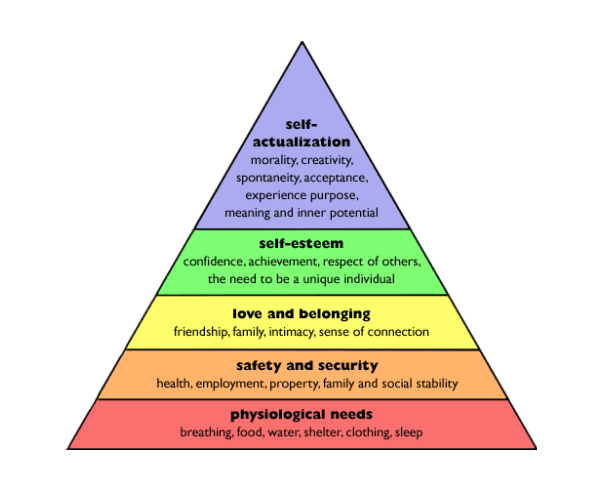
Boon et al. (2018) opined that, Maslow’s hierarchy of needs is also another effective employment and human resource management strategies through which the organisational leaders try to maintain good workforce and retain the experienced employees in long run. As per the model of Maslow’s hierarchy of needs, there are different needs which are physiological, safety and security, love and belongings, self esteem and self actualisation. According to Boon et al. (2018), the leaders must focus on these needs and maximise the employee’s wellbeing in long run. The physiological needs are such as basic needs including food, shelter, water, breathing, sleep and clothing and the leaders try to provide the workers good wages and salaries to fulfil their basic needs. On the other hand, the need of safety and security is also mandatory for the employees where the health and benefits at the workplace, job security, social stability and employment status are the major protection given by the organisational leader to retain the employees and encourage them to work efficiently. Love and belongingness are also effective where the employees must develop good bonding and corporate relationship with their colleagues so that it would be possible for the leader to provide friendly atmosphere to work efficiently. As stated by Bailey et al. (2018), the needs of self esteem include confidence, achievement, and respect for others which further provide a scope to the leader to develop strong bonding among the employees and manage the workplace efficiently. Recognition, creativity and innovation, morality are also managed by the leader for maximising the need of self actualisation. Through fulfilling these five needs, the employers try to create values for all the employees and encourage them to perform successfully.
2.3 Entrepreneurship skill
According to Nyaera and Okeyo (2019), the skill and the performance of the entrepreneurs of the business firms are also playing crucial role in managing the workforce and lead the changes efficiently. The skill of entrepreneurs helps the business leaders to develop suitable leadership style and practice to manage the workforce. The major skills are such as communication skill, the practice of cooperation, initiator, strategic thinking, time management skill, having curiosity, efficiency, and resilience, networking and financing skill. These are the major skill for the organisational leader to manage the workforce. Okello and Ngala (2019) opined that, the leaders try to enhance communication and cooperation in the workplace where their interactive skill and cooperative skill help them to engage with the staff members and develop strong corporate relationship with them for better organisational practice. The leaders also require having creative skill, critical analytical skill and problem solving skill which further boosts the performance of the organisation in long run. The organisational leader aim at resolving the existing problem by critical analysis and evaluation and them develop strong decision which would be fruitful for the organisations. As stated by Nyaera and Okeyo (2019), this further influences the leaders to change the organisational practice and working activities and manage the employees successfully in long run. Okello and Ngala (2019) stated that, time management, resources investigator, initiator, implementation skill to executive the organisational practice and ethical rules as well as efficiency in managing the activities are other skills which would be advantageous for the organisational leader to enhance their performance and lead the team members towards future success.
2.4 Leadership style for change management
According to Nyaera and Okeyo (2019), the leadership style and practice are important for the organisational management team and business leader to lead the employees and achieve future success by fulfilling the organisational aims and objectives and in this regard, the leaders try to follow suitable leadership style for better management practice and maximising the organisational activities in long run. During the change management practice, it is mandatory for the leaders to have suitable leadership style to influence the team members and encourage them successfully.

Mngoda (2019) opined that, the transformational leadership style provides a scope to the leaders to manage their employees in the workplace. As per the transformational leadership style, the major components are such as individualised characteristics, leader behaviour, increased motivation and encouragement in the organisational workplace. The organisational leaders try to manage the workforce by motivating them and encouraging their creativity. Managing transparency and accountability at the workplace as well as creating good organisational culture including equality and diversity management, creating values or the staff members and engineering all the staff ion the workplace are effective for the leaders to manage change. As stated by Kakucha, Simba and Anwar (2018), inspirational motivation and encouraging the staff creativity are effective for the organisation to manage the staff members and it further helps the organisational leaders to lead the team members successfully. As opined by Mngoda (2019), the monetary incentives and non-monetary rewards are there to motivate the employees where the leaders try to engage them and fulfil their commitment in long run.

As opined by Bosire (2018), as per the situational leadership style, there are four factors which are supportive, coaching, delegating and directive. Under the supporting leadership style, the leaders are highly supportive and low directive behaviour in the workplace. As per the delegating, there is low support and low direction from the end of the leaders. According to Kakucha, Simba and Anwar (2018), directing refers to high direction and low supportive behaviour. Coaching is related to the leadership style where the leaders are highly supportive and highly directive towards their employees in the workplace. In the recent era of globalisation, the organisational leaders try to follow the coaching leadership, to manage the workforce efficiently. Munyao (2019) opined that, the leaders try to support them and direct the employees towards achieving future success this is one of the effective leadership style for change management where the leaders are able to direct the team and develop strong bonding with them by sharing the organisational information and data, supporting them with training and development program as well as fulfilling the leaders commitment. Kitsios and Kamariotou (2017) stated that, the leaders are also able to manage the employees efficiently through directive leadership style as per the situational model of leadership, where the employees are motivated and influenced to manage change by contributing with their full capabilities.
2.5 Change management strategy
According to Alilyyani, Wong and Cummings (2018), change management is the process through which the organisations lead the employees towards changed initiatives to adopt and implement new strategic planning in the organisations. In the recent era of globalisation, the organisations try to manage change and enhance organisational creativity and innovation to achieve success and secure future sustainable development. Munyao (2019) opined that, for working innovatively and performing efficiently in the market, changes are implemented as per the leader’s strategies and organisational vision where the employee management is mandatory to lead the change and make the changes successful in the workplace. Lewin’s change management principle is good to understand the changed initiatives and the ways to manage the workforce in the organisations. As opined by Alilyyani, Wong and Cummings (2018), there are three stages of change implementation in the organisation which are unfreezing, change and refreeze.

As opined by Ngumuta (2018), under the first stage unfreeze, it is necessary to determine the needs of change, ensure the strong support from the upper management team, creating the needs for change and managing the understanding the doubts and concern. In this regard, the organisations must recognise the needs for change and share the required changes in the organisational workplace with the employees. Creating urgency of changes in the organisation as well as ensuring the upper management cooperation so that the leader can lead the changes towards achieving future success. In this regard, managing the doubts and concerns at the workplace is also mandatory where the leaders try to manage the doubts of the employees and understand concerned about their job position and roles. According to Good, Tourigny and Simha (2018), during the changes, the employees become concerned about the changed initiatives and their job security and in this regard it is the role of the leaders to manage change by managing the employees doubts and concern so that trust and loyalty can be built among the employees. After that, change is necessary to be handled efficiently by the leader where the activities such as dispel rumours, lead changes, enhance cooperation and communication as well as empower the individuals and manage the people through engaging them in the workplace. As opined by Juma (2016), these are also necessary to lead the change. The leader enhances communication and cooperation among the staff members in the workplace so that they can rely on each other and develop trust and bonding with the leaders and the management team and on the other hand, internal collaboration further helps the employees to lead the change and contribute efficiently. Moreover, the leaders try to empower the team members in the organisation for better decision making behaviour as well as engaging them for working as a partnership working practice will be beneficial for the leaders to lead the change and achieve future organisational success. On the other hand, the third stage as per the model is refreeze where the leaders try to provide support and training programs to the staff members, develops wings to sustain change and celebrate success. As stated by Good, Tourigny and Simha (2018), the employees also get training and development program to work with creativity and technological innovation as well as they gets support and direction from the leader to achieve future organisational success.
2.6 Impacts of employee management and leadership on change management
According to Issa (2017), the leaders and the management team focus on improving employee’s engagement and leadership style to develop suitable corporate culture in the organisation as it is effective for managing change in the workplace. Mongare (2020) stated that, through creating good corporate culture, the leaders can lead the staff members and improve trust and loyalty among the team members. Developing strong corporate relationship among the staff members is also possible through effective human resource management strategy and leadership style which further enhances the team building activities and maximise the organisational activities in long run. The leaders focus on engaging each individual with the changed initiatives which is also beneficial to improve understanding of the staff members and resolve their queries and doubts during the change. Strong corporate bonding and high cooperation are effective for the organisational leaders to manage the staff members and create values for them during the change. Dellve et al. (2018) opined that, supportive leadership style and direction of the leaders further encourage the team embers and motivate them, to contribute efficiently during the change so that the leader can achieve future success through the changed initiatives. On the other hand, during the change, the suitable leadership style as well as the managerial practice is influencing good team working and developing partnership working practice for better activities and working efficiently in the workplace.
Additionally, as stated by Hargett et al. (2017), the organisations can lead the workforce towards achieving organisational success through change and achieve higher in future. Dispelling the rumours in the organisational workplace through the change as well as manage the workforce are also the positive effects of the organisational change management practice. Janssens et al. (2018) stated that, the leaders also can resolve the issues of internal conflicts and resistance to change among the staff members and lead them efficiently through enhancing cooperation and communication. High recognition, job security and the achievements of the employees are taken care of efficiently in the organisation, where the leaders are successful to manage the workers and create strong bonding with them during the changed process. Additionally, Malila, Lunkka and Suhonen (2018) opined that, the transformational leadership style with directive and supportive behaviour are also beneficial for managing change and fulfilling the commitment towards each employee where the staff members can feel valued in the workable and they are encouraged to show their creativity and innovation to lead the changes in the workplace.
2.7 Summary
The literature review is effective to understand the strategic planning to lead the changed initiatives in the organisation. Through the above mentioned review of literatures, it is also possible for the researcher to gain understanding about the human resource management strategy as well as the leadership practice which are suitable to handle the human resource of the organisation and manager the organisational capabilities as a whole. The researcher is also bale to gain ideas about the strategy of implementing changes by handling the diverse team members in the organisation which further helps the researcher to conduct the research and gather authentic data and information for further analysis and evaluation related to the impacts of leadership style and human resource management strategy on the change management practice in the organisation.
Chapter 3: Research methodology
Research methodology is effective chapter where the researcher has the scope to select the right method of conducting the business project efficiently. Through selecting the data collection and data analysis roves, the researcher would be able to gather authentic data sources and analyse it efficiently for fulfilling the above mentioned research topic. The research onion is effective to choose the methods and develop effective planning to conduct the business project in a systematic way.
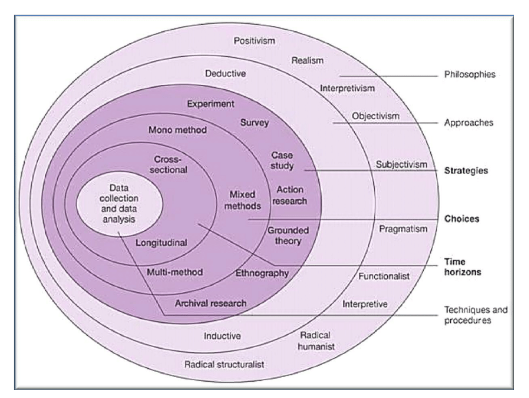
3.1 Research philosophies
The researcher in this study selects positivism philosophy, where it will be helpful to conduct in depth research by gathering authentic sources of information, wide coverage of range of theories and concepts, individual’s thoughts and in depth analysis can be possible under the positivism philosophy of the research. It helps to identify as well as measure and analyse the research phenomenon and further provides a scope to the researcher to analyse the above mentioned research topic and fulfil the objectives.
3.2 Research approaches
Among the deductive and inductive approaches, the researcher in this business project will select deductive approach, where the theories and concepts are gathered well and after that, the findings will be analysed on the basis of theories and concepts related to the research topic.
3.3 Data collection
The two types of data collection method are primary and secondary data collection. The secondary data collection is the way to collect data and information from the secondary sources of information such as books, journals, articles and online published articles. On the other hand, the primary data collection is the tactic of gathering the data from the first hand information, where the respondents provide the feedback and information related to the interview questions. In this study, the researcher chooses both the method of data collection to gather the relevant data and information. The primary data is collected through arranging interview with the managers of NHS and the secondary information is collected through reviewing the secondary sources of information.
3.4 Data analysis
There are two types of data analysis technique, which are quantitative and qualitative. The quantitative data analysis is related to evaluating the gathered data through charts, graphs and statistical equations. On the other hand, the qualitative data analysis is the way of analysing and evaluating the collected data through secondary information. In this study, the researcher will select qualitative data analysis technique to evaluate the interview transcript provided by the management team of the NHS.
3.5 Sampling method
Random sampling method is chosen here and the researcher of this business project will select five managers at the NHS to collect authentic data and information. The researcher develops the interview questions and arrange telephonic interview with the managers and keep the audio record safely for further analysis and evaluation.
3.6 Ethical consideration
The researcher maintains research ethics in this study and maintains respect and integrity to include the managers of NHS. The researcher tries to convince the managers to give their valuable feedback and also ensure that the gathered data and information will be kept safely under Data Protection Act 1998. Additionally, relevant and valid data are included in the business project to fulfil the research questions and identify the internal leadership style and change management practice at the NHS.
Chapter 4: Findings and discussion
4.1 Introduction
Findings and discussion is the major chapter of the business project in order to gather the authentic data and information and analyse the data further for better evaluation. In this chapter, the researcher will represent the data collected through the interview with the managers at the organisation NHS. The five managers at NHS try to cooperate with the researcher for providing suitable feedback and share the internal information with the researcher for collecting authentic information which would be efficient to analyse the above mentioned research technique. The data findings and analysis will be represented where it is possible to understand the leadership style and change management process of the leader at NHS which is a famous health care provider in the UK.
4.2 Data findings
Through the interview, the researcher is successful to collect the data and information regarding the organisational practice. The researcher convinces the organisational management team at NHS to take active art in the research and the data will be protected and utilised only for this research purpose. The managers at NHS are cooperative and they are interested to provide internal information about the leadership and management practice in the NHS during the changed initiatives.

Interview transcript
1. Are you empowered in the organisation?
- The first manager stated that, yes I feel empowered ion the organisation as the leader tries to gain more creative ideas and innovative practice to manage the workplace in a better way and serve the patients uniquely. The leader asks me to share the workplace feedback and helps me to improve creativity and innovation in the workplace to maximise the quality of health care system.
- The second and third manager is not happy with the leadership style, as they feel lack of empowerment and lack of communication in the workplace. Both the managers revealed that they try to interact with the leader, but they could not because of a broad management team and lack of general meeting and discussion among the leader and managers. They also fail to share their opinion in front of tigers and thus they are not satisfied with the workplace as they cannot be empowered and cannot communicate with the leader of NHS.
- The fourth manager revealed that there is empowerment of the managers in the NHS where the leader tries to gain more diverse opinion and decisions by empowering the management team and choose the best possible solutions for better working practice. The leader also tries to communicate and cooperate with the managers and also with the employees to develop strong bonding among them.
- The fifth manager also stated that, there is empowerment and the leader motivates the managers to share their opinion and provide innovative thoughts and decision to maximise the organisational values in long run.
2. Is NHS efficient to provide effective monetary incentives?
- Three managers reveal that there are monetary incentives and rewards in the NHS which further encourage the staff members efficiently. The three managers are also satisfied with the incentives structure and rewards that the NHS provides them on yearly basis. Though there are incentives in the organisation, the percentage of incentives is low as compared to other public sector in the UK and thus it is not fruitful for the managers to get motivated and work for gaining higher.
- Other two managers revealed that the performance related pay is not there and the motivational activities are not effective to retain the experienced staff in long run. There is lack of safety and security for the employees and also for the managers which may raise issues for the staff members to continue with the health infrastructure at NHS.
3. Is the salary package for the management and employees fair?
- Two of the managers stated that, the salary package is good for the managers and also for the health care providers including the doctors, nurses and staff members in the NHS. The health care professionals also can get getter salary as per the patients volume and the numbers of patient recovery as well as the structured salary for the staff members are also good to retain the experienced staff for long run.
- Another manager stated that, yes the salary package is good, but the promotional activities and recognition at the workplace are not effective to encourage the employees. There is lack of promotional activities which may deteriorate the performance of the experienced staff members.
- Other two managers revealed that, the salary package is good and it further income the staff members and the employees to work efficiently at the organisation. There is proper salary slab according to the job role and responsibilities of the health care provider and accordingly the organisational position of seniority are managed well.
4. Do you provide chance to the employees to take active part during change?
- Two managers revealed that, we are happy to provide chance to the employees to take active art during the changed initiatives by the leader. As we are working with the employees and try to develop strong team work, we influence the team members and lead them efficiently towards achieving future success.
- The third manager also stated that yes, we try to encourage the staff members during the organisational decision making behaviour so that they would be able to share their opinion and take active care in the organisation.
- The other two managers answered that, they sometimes empower the employees, but for majority of the time, it is not possible to get effective feedback and opinion of the staff members in the NHS. Thus, it is difficult for the managers to provide the chance of taking active art in the decision making behaviour.
5. What is the major leadership style in the NHS?
- The first two managers revealed that, the major leadership style is related to giving incentives and punishment as well, in the workplace according to the job roles and performance of the staff. The leaders try to direct the employees and health care providers at NHS and there is transactional leadership style which in implemented to manage the staff members.
- The other three managers revealed that, the leader follow demographic leadership and cooperative practice to lead the team members towards achieving future success. However, the leaders are not communicative and thus there is no such bonding and strong corporate relationship among the leaders and the employees.
6. How do you manage the employees in the workplace?
- All the managers revealed that, there is strong corporate bonding among the managers and the staff members without which it is not possible for them to lead the staff. The managers try to provide friendly atmosphere to the staff members to work better and enhance internal cooperation and communication. The managers also try to handle the workforce with enhancing communication, providing support and directing the team members to achieve future success.
7. How does the leader lead the employees?
- The first three managers revealed that, the leader of NHS mainly directs the team member’s efficiently and lead them with high cooperation. The leader tries to motivate them with monetary incentives and rewards which would be one of the effective strategies to encourage the staff and influence them to participate actively for maximising organisational values. The leader of NHS also supports them with effective organisational equipment and sharing information which are also helpful for the leader to manage the staff and lead them successfully.
- The other two managers stated that, the leader mainly focuses on providing them good workplace to each staff in order to improve their contribution and encouraging their creativity in the workplace. The leader at NHS is successful to encourage the staff and retain the experienced members for providing high quality health care service across the UK.
8. What are the existing challenges in the workplace to lead changes?
- First manager revealed that, the major issue is resistance to change among the staff where the members become familiar with the working structure and internal practice and they are not hay with the changed initiatives by the leader.
- The second manager stated that, there is lack of communication and non-cooperation during the change which may deteriorate the performance of the organisation.
- The third and fourth manager revealed that, the leader is not efficient to empower the members and lead them with creativity and innovation.
- The fifth manager stated that, the leader is not efficient to manage change with effective engagement with the employees which further raise the issue of mistrust, misunderstanding and internal conflicts among the team members during the changed initiatives.
9. What is the change management practice followed by the leader of NHS?
- The first two managers stated that the leader arranges meeting with the management team and never empower the staff members in the meeting during the change.
- The third manager revealed that, the leader focuses on technical changes and changes in the health care infrastructure and in this process, the infrastructure development and technological innovation depends on capital investment in the technology and health care equipments as well as hiring the technical staff.
- According to the fourth and fifth manager, the leader mainly focuses on leading the changed initiatives and implements it efficiently without any error in execution. The leaders also develop effective financial planning for change management and maintain time for achieving future success through change.
10. What would you suggest the leader of NHS to manage change in the NHS?
- All managers revealed that, it is mandatory for the organisational leader at NHS to manage the employees efficiently by creating good corporate culture; otherwise it would not be possible to manage change and resolve the existing problems. The leader must focus on sharing the organisational data and information as well as vision of the institution with all the staff. The leaders also must provide support and direction to the staff members during the change so that the organisation would be beneficial to provide good working culture to the employees.
- The two managers revealed that, the leader at NHS must arrange training and development programs which are mandatory for the staff to gain more knowledge and efficiency in providing the quality health care services to the patients. Changes are initiated and implemented by the leader for better health care management and for this, it is also necessary to engage each staff and empower them in the organisation so that the leader can lead the employees towards achieving future success.
4.3 Data analysis
As per the interview data and information from the five managers of NHS, it can be revealed that, the leaders and the manager’s team try to manage the staff members to serve the patients in a better and innovative way by delivering quality care and services to each patient. It is mandatory for the organisation NHS to manage the workforce and the managers in this regard are efficient as compared to leader to empower the employees sometime in the organisation and create values for them. The leader fails to engage with the staff at NHS and it increases the issue such as internal conflicts, lack of communication and cooperation, as well as resistance to change, mistrust and misunderstanding among the staff (Kakucha, Simba and Ahmed, 2018). The leaders are not efficient to empower the employees during the change and the change initiatives are not up to the mark. The organisational leader at NHS is also suffering from encouraging the staff members due to poor salary structure and incentives. The organisational alders fails to restructure the salary and the promotional activities within the organisation and reward system are not fair (Banfield, Kay and Royles, 2018). The leader is not efficient to develop strong relationship with the management team and the employees. There is lack of communication with all the staff members of NHS and this further raise the issue of resistance to change (DeCenzo, Robbins and Verhulst, 2016). During the change initiatives, the employees feel insecure about their job position and it raises resistance to change and internal conflicts, the organisational leader is also not efficient to enhance internal communication, but the management team tries to engage the employees during the organisational decisions making behaviour so that it would be possible for the leader to manage the workforce and lead the changed initiatives successfully (Sparrow, Brewster and Chung, 2016).
According to the above findings, the managers are happy with the leadership role and commitment of the leader, but there is lack of activities to develop suitable organisational culture and this is mandatory in the recent years to manage diverse workforce. Due to lack of transparency and engagement with the employees, the staff members feel not valued at the workplace during the change (Brewster and Hegewisch, 2017). The leader and managers try to cooperate with each other for better changed initiatives so that the changes can be implemented without any error and risks (Brewster et al., 2016; Marchington et al., 2016). In the recent era of globalisation, it is also mandatory to develop suitable leadership style in the organisation which is directive situational leadership and transformational leadership so that it would be possible for the leader to encourage employee’s creativity and improve their participation as well during the change (Chelladurai and Kerwin, 2018). There is lack of leadership style and poor managerial practice at NHS which leads to lack of management of the human resource (Nankervis et al., 2019; Bratton and Gold, 2017). As per the interview transcript, it has also been travelled that, there is lack of fairness in compensation and bonus as well as during the change, the strategies to engage the employees are not good which the major issue in the workplace are also. Lack of organisational culture and mismanagement leads the employees towards unsatisfied workforce and lack of motivation to perform better (Collings, Wood and Szamosi, 2018). The leader in this regard must focus on the leadership style and employee management to lead the changes towards achieving future success (Stewart and Brown (2019; Armstrong and Taylor 2020). As per the findings, the managers also stated that, there needs to develop suitable organisational culture and fair treatment to engage all the staff members during the change so that the leaders can cooperate with them, and lead them, successfully.
5. Conclusion and recommendations
5.1 Conclusion
The research is about exploring the impacts of human resource management and the leadership style ion the change management practice of the organisations. The aims and objectives are effective for the researcher to progress in the paper efficiently. The literature review is good for the resae5rcher to gain in-depth understanding and strategy to manage change. The methodology is also effective to choose suitable method of collecting the data and analysing it efficiently in the business project. Through this business project all the objectives are fulfilled, where the human resource management strategies planning, change management principles and leadership practice are revealed successfully through further analysis and evaluation. The interview transcript provides a scope to understand the internal working system and leadership style at NHS. Through the above analysis and findings, it can be stated that, the leaders and the management team at NHS are effective to support and direct the team members towards achieving future success.
Additionally, they try to cooperate with them and enhance communication during the changed initiatives, the managers are happy with the salary structure, but there is lack of job promotion and increment in the rewards system which may deteriorate the performance of the staff in long run. The leader and the management team are looking for changes in the workplace with high organisational infrastructure; health care system development and technological innovation by IT implementation and these changes are executed efficiently where the leaders empower the managers in the workplace for making the organisation successful. However, the employees are not empowered always as the numbers of staff members is huge and it is difficult for the leaders and managers to gain feedback from each staff and thus there exists the issues such as internal conflicts, resistance to change and lack of communication. The leadership style of NHS is good and the leaders must focus on management the workplace efficiently to manage changed initiatives and achieve future success. The fourth objective of the study can be fulfilled by providing suitable suggestions to the leader of NHS to manage change in the workplace by developing suitable leadership style and managerial practice.
5.2 Recommendations
The recommended suggestions for the leader at NHS are such as,
- The leader must focus on creating good organisational corporate culture with flexibility and freedom to work. The leader needs to provide flexible hours to the staff members including the doctors and nurses and social workers to work as per their convenience and this is one of the motivation all factors to retain them in long run.
- The leader needs to maintain transparency and accountability as well as provide fair treatment to each staff and managers in the workplace during the changed initiatives.
- It is necessary for the leader at NHS to arrange the training and developmental programs as well as restructure the incentives and rewards during the change as these factors motivate the employees to take active part in the changed initiatives.
- The leaders must enhance internal common location through implementing Information and Communication Technology (ICT) and arrange group discussion and general meeting for discussing over the changed process.
- The leader of NHS must empower each individual including the health care professions to share their feedback and opinion during the change.
- The leader needs to share the organisational activities, need for change and provide clear information about the changed process so that the employees can understand and participate in the changed process.
- It is mandatory for the leader of NHS to enhance cooperation and develop partnership working practice through high communication and team building activities as well as engage the people at the workplace which further helps the leader to manage the staff and lead them as a team towards achieving future success.
Reference List
- Alilyyani, B., Wong, C.A. and Cummings, G., 2018. Antecedents, mediators, and outcomes of authentic leadership in healthcare: A systematic review. International journal of nursing studies, 83, pp.34-64.
- Armstrong, M. and Taylor, S., 2020. Armstrong's handbook of human resource management practice. London: Kogan Page Publishers.
- Bailey, C., Mankin, D., Kelliher, C. and Garavan, T., 2018. Strategic human resource management. London: Oxford University Press.
- Banfield, P., Kay, R. and Royles, D., 2018. Introduction to human resource management. London: Oxford University Press.
- Berman, E.M., Bowman, J.S., West, J.P. and Van Wart, M.R., 2019. Human resource management in public service: Paradoxes, processes, and problems. London: CQ Press.
- Boon, C., Eckardt, R., Lepak, D.P. and Boselie, P., 2018. Integrating strategic human capital and strategic human resource management. The International Journal of Human Resource Management, 29(1), pp.34-67.
- Bosire, D.O., 2018. Determinants of Strategic Change Management Practices Among County Governments in Kenya (Doctoral dissertation, university of nairobi).
- Brannen, J., 2017. Mixing methods: Qualitative and quantitative research. London: Routledge.
- Bratton, J. and Gold, J., 2017. Human resource management: theory and practice. London: Palgrave.
- Brewster, C. and Hegewisch, A. eds., 2017. Policy and practice in european human resource management: The Price Waterhouse Cranfield survey. Berlin: Taylor & Francis.
- Brewster, C., Houldsworth, E., Sparrow, P. and Vernon, G., 2016. International human resource management. London: Kogan Page Publishers.
- Chelladurai, P. and Kerwin, S., 2018. Human resource management in sport and recreation. London: Human Kinetics.
- Collings, D.G., Wood, G.T. and Szamosi, L.T. eds., 2018. Human resource management: A critical approach. London: Routledge.
- DeCenzo, D.A., Robbins, S.P. and Verhulst, S.L., 2016. Fundamentals of human resource management. New York: John Wiley & Sons.
- Dellve, L., Andréasson, J., Jutengren, G. and Hermansson, J., 2018. How can support resources support sustainable leadership in healthcare?.
- Good, J.P., Tourigny, L. and Simha, A., 2018. Ethical leadership in healthcare: The mediating effect of emotional exhaustion. In Academy of Management Proceedings (Vol. 2018, No. 1, p. 13471). Briarcliff Manor, NY 10510: Academy of Management.
- Hargett, C.W., Doty, J.P., Hauck, J.N., Webb, A.M., Cook, S.H., Tsipis, N.E., Neumann, J.A., Andolsek, K.M. and Taylor, D.C., 2017. Developing a model for effective leadership in healthcare: a concept mapping approach. Journal of healthcare leadership, 9, p.69.
- Issa, M.A.L.I.K., 2017. Strategic Change Management Practices and Quality Services by Rural Electrification Authority in Kenya.
- Janssens, S., Simon, R., Beckmann, M. and Marshall, S., 2018. Shared Leadership in Healthcare Action Teams: A Systematic Review. Journal of patient safety.
- Juma, D., 2016. Effect of strategic change management practices on performance of Helpage international staff in Africa (Doctoral dissertation, University of Nairobi).
- Kakucha, W., Simba, F. and Ahmed, A., 2018. Effects of organizational culture on strategic change management in Mombasa County Government. Journal of Human Resource & Leadership, 2(1), pp.19-41.
- Kakucha, W., Simba, F. and Anwar, A., 2018. Effects of Organization Structure on Strategic Change Management in Mombasa County Government. Journal of Public Policy & Governance, 2(1), pp.21-42.
- Kaufman, B.E., 2019. Managing the human factor: The early years of human resource management in American industry. Cornell University Press.
- Kitsios, F. and Kamariotou, M., 2017. Strategic Change Management in Public Sector Transformation: The Case of Middle Manager Leadership in Greece. In Proceedings of BAM Conference 2017 (pp. 73-78).
- Malila, N., Lunkka, N. and Suhonen, M., 2018. Authentic leadership in healthcare: a scoping review. Leadership in Health Services.
- Marchington, M., Kynighou, A., Wilkinson, A. and Donnelly, R., 2016. Human resource management at work. London: Kogan Page Publishers.
- Mngoda, M.W., 2019. Journal managing strategic change for organizational performance. International Journal of Advanced Research in Management and Social Sciences, 8(4), pp.163-172.
- Mongare, K.P., 2020. Strategic change management practices at municipal council of Kiambu. International Journal of Recent Innovations in Academic Research, 4(7), pp.1-15.
- Munyao, B.S., 2019. Strategic change management practices effect on implementation of teacher performance appraisal in Kitui central public secondary schools (Doctoral dissertation).
- Nankervis, A., Baird, M., Coffey, J. and Shields, J., 2019. Human resource management. Boston: Cengage.
- Ngumuta, D.N., 2018. Strategic Change Management Practices Adopted by Machakos County Government for Service Delivery (Doctoral dissertation, university of nairobi).
- NHS, 2020. About us. [online] Available at: https://www.england.nhs.uk/about / [Accessed on 30 July 2020].
- Nyaera, D.R. and Okeyo, W., 2019. Organizational Leadership Styles and Change Management in Telecommunication Industry in Kenya: Case Study of Telkom Kenya. Journal of Strategic Management, 3(4), pp.12-24.
- Okello, M.A. and Ngala, M.O., 2019. Top management team characteristics and strategic change outcomes of branch supermarkets in Nairobi County. International Academic Journal of Human Resource and Business Administration, 3(7), pp.441-456.
- Sparrow, P., Brewster, C. and Chung, C., 2016. Globalizing human resource management. London: Routledge.
- Stewart, G.L. and Brown, K.G., 2019. Human resource management. New York: John Wiley & Sons.
Appendices
Appendix 1: Ethics form
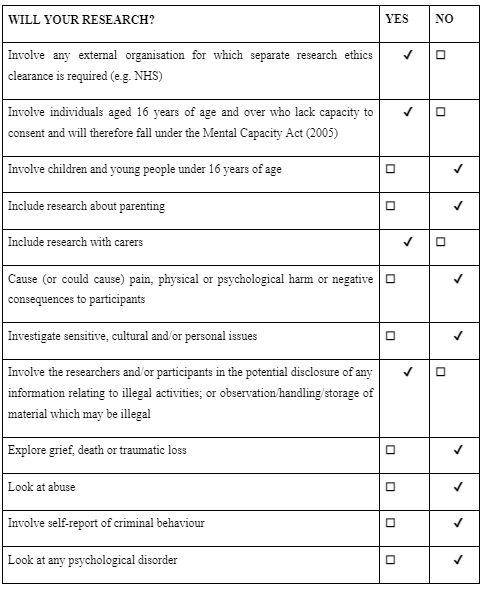

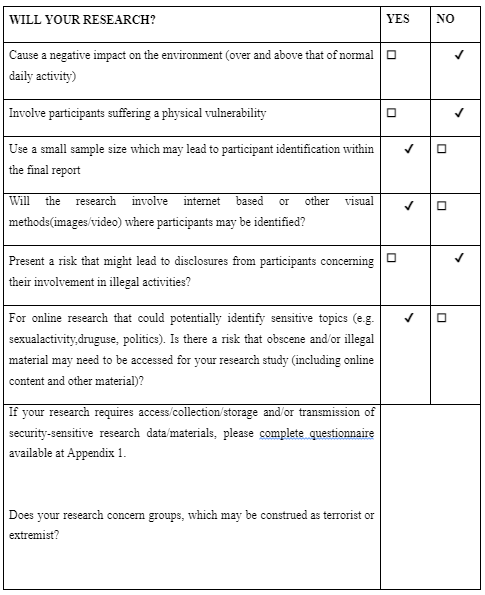
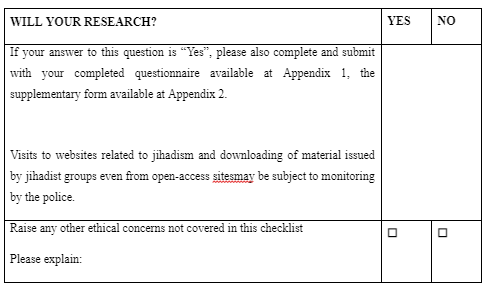
Appendix 2: Interview questions
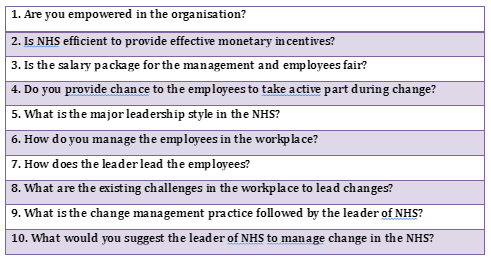
Appendix 3: Gantt chart
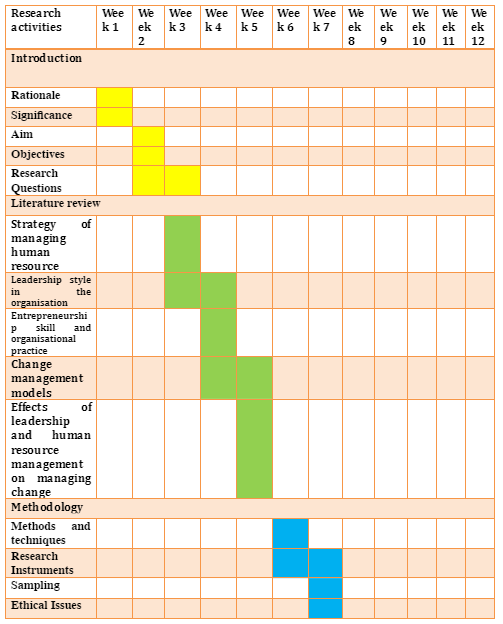
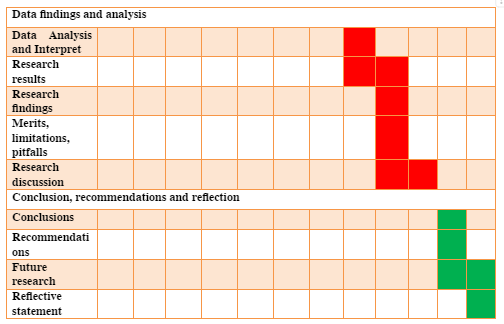
Dig deeper into Ensuring Success through Strategic Implementation with our selection of articles.
Dig deeper into Narration and style of written typography and text in animation with our selection of articles.
What Makes Us Unique
- 24/7 Customer Support
- 100% Customer Satisfaction
- No Privacy Violation
- Quick Services
- Subject Experts



